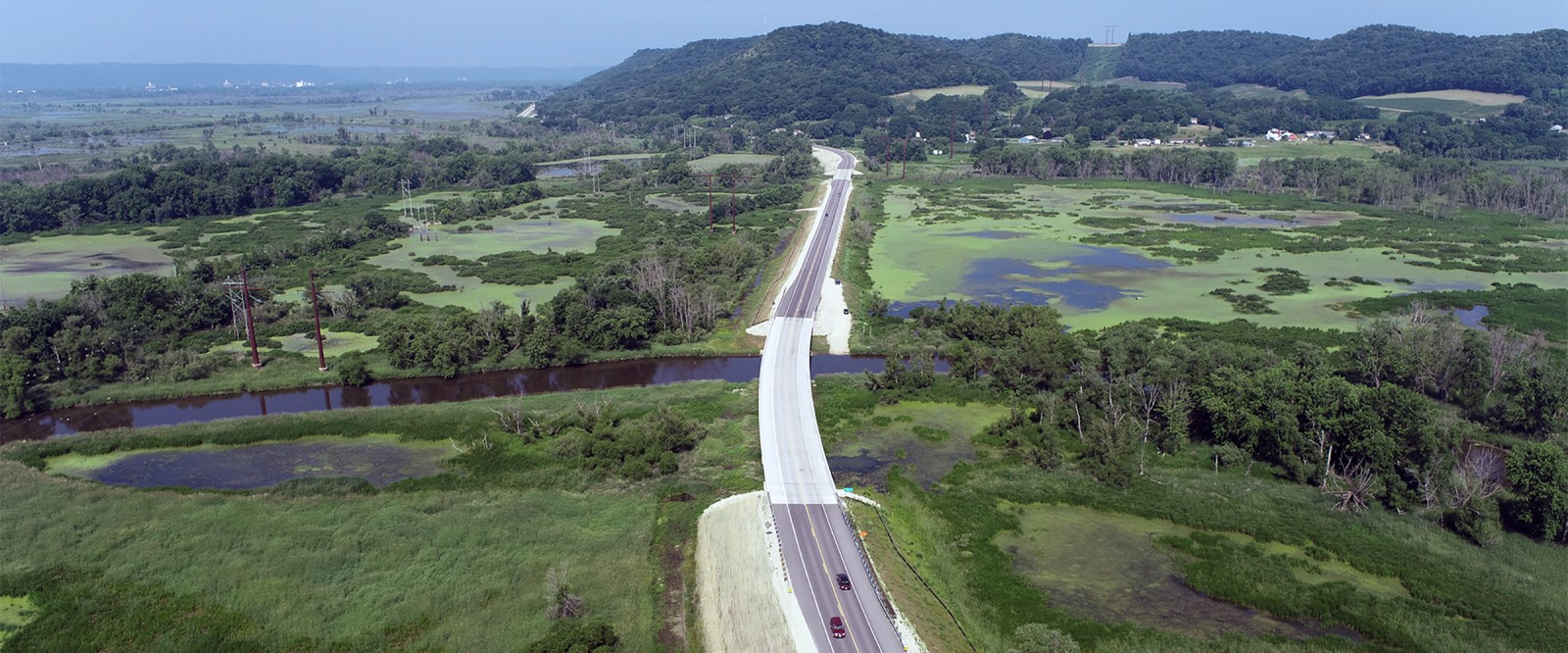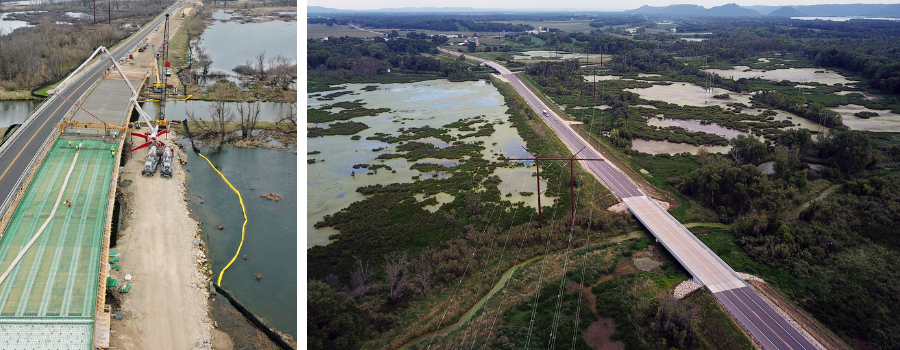Balancing Comprehensive Design and Environmental Sensitivity Along a Popular Wisconsin Tourist Route

Written by: Stephanie Christensen, PE, EMCS, Inc.
![]()
Scenic STH 35 provides a vital interstate link between Wisconsin, Iowa, and Minnesota. This route carries approximately 7,000 vehicles per day and is part of the Great River Road, a popular tourist route following along the Mississippi River. EMCS, in partnership with the Wisconsin Department of Transportation (WisDOT) Northwest Region, was tasked with rebuilding the STH 35 bridges over the Trempealeau River.
The Trempealeau River is subject to frequent flash flooding and high-water conditions, which posed a risk to the existing bridges. These bridges constructed in 1956 were narrow and deteriorated throughout without proper clearance to the waterway in a 100-year event.
To address these deficiencies, EMCS designed two modern prestressed concrete girder bridges in addition to one mile of permanent roadway reconstruction with a profile raise to maintain safety during high-water storm events. The design navigated the natural constraints of the project area while considering the needs of the public, wildlife, and long-term costs.
Partnering to Address Unique Challenges
The project area sits primarily within US Fish and Wildlife Service (USFWS) Trempealeau National Wildlife Refuge, which is protected under federal law. The EMCS team executed extensive planning and coordination efforts with the USFWS, the US Army Corps of Engineers (USACE), and the Wisconsin Department of Natural Resources (WDNR) to ensure minimal environmental impacts to the area. This included:
- Setting a plan to protect wetland and waterway resources during construction while restoring native wetlands post-construction
- Working closely with the USFWS to protect bird activity in the refuge while resulting in zero temporary or permanent impacts to the refuge
- Restoring the site to improve wildlife connectivity under the bridges and implementing permanent small animal fencing to reduce turtle fatalities
- Working with the public, WDNR, and USFWS to maintain public access to the river for small watercraft within WisDOT right-of-way
The geographic restraints of the wildlife refuge and the nearby Mississippi River meant that no viable detour routes were available, so traffic had to be maintained throughout construction. Our team designed temporary bridges and one mile of temporary roadway to keep access open to the traveling public.
Keeping project cost and efficiency in mind, EMCS compared initial construction with long-term maintenance costs and took steps during the design process such as:
- Completing extensive alternatives and cost analyses for on and off-alignment options
- Minimizing the importing of excessive fill material and potential settlement in this environmentally sensitive area by maintaining the existing alignment
- Reducing the number of piers on each bridge to improve waterway navigation conditions while reducing future structural maintenance costs
Celebrating the Results
The project team worked together to overcome challenges and focus on issues important to the community and all partnering agencies while balancing WisDOT’s project priorities and budget. This key river crossing will safely serve the local region and visitors for decades to come.

About the Guest Blogger
![]() Stephanie Christensen, PE is Vice President at EMCS and leads the firm’s Wausau office. With more than 25 years of experience, she has delivered transportation and infrastructure projects across Wisconsin.
Stephanie Christensen, PE is Vice President at EMCS and leads the firm’s Wausau office. With more than 25 years of experience, she has delivered transportation and infrastructure projects across Wisconsin.
A dedicated advocate for the engineering industry, Stephanie currently serves on the ACEC Wisconsin Board of Directors and has a long history of volunteering with ACEC Wisconsin.
